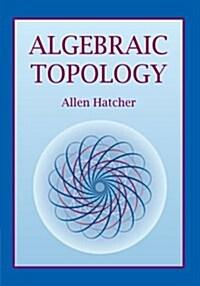책 이미지

책 정보
· 분류 : 외국도서 > 기술공학 > 기술공학 > 생화학
· ISBN : 9780415695381
· 쪽수 : 700쪽
· 출판일 : 2014-04-04
목차
Preface
Nomenclature
About the author
1 Definitions and stoichiometry
1.1 Measurement variables
1.2 Calculation of measurement variables
1.2.1 Extent of the reaction
1.2.2 Conversion
1.3 Continuous systems
1.4 Partial pressures
1.5 Method of total pressure
1.6 General properties
1.7 Solved problems
2 Chemical equilibrium
3 Kinetic of reactions
3.1 Reaction rates?definitions
3.2 Reaction rate
3.2.1 Kinetic equations
3.3 Influence of the temperature on the reaction rate
3.3.1 Reversible reactions
3.3.2 Interpretation remarks
4 Molar balance in open and closed systems with chemical reaction
4.1 Batch
4.2 Continuous stirring tank reactor
4.3 Continuous tubular reactor
5 Determination of kinetic parameters
5.1 Irreversible reaction at constant volume
5.1.1 Kinetic model of first order
5.1.2 Kinetic model of second order (global)
5.2 Irreversible reactions at variable volume
5.2.1 Irreversible of first order
5.2.2 Irreversible reactions of second order
5.3 Irreversible reactions of order n?half-life method
5.4 Reversible reactions at constant volume
5.4.1 Direct and reverse first-order elementary reaction
5.4.2 Direct and reverse second-order elementary reaction
5.5 Determination of the kinetic parameters by the differential method
5.5.1 Differential reactor
6 Kinetics of multiple reactions
6.1 Simple reactions in series
6.2 Simple parallel reactions
6.3 Continuous systems
6.4 Kinetics of complex reactions
6.4.1 Decomposition reactions
6.4.2 Parallel reactions
6.4.3 Series?parallel reactions
7 Non-elementary reactions
7.1 Classical kinetic model
7.2 Chain reactions
7.3 Theory of the transition state
8 Polymerization reactions
8.1 Reactions of thermal cracking
8.2 Kinetics of polymerization reactions
8.3 Reactions by addition of radicals
8.3.1 Initiation
8.3.2 Propagation
8.3.3 Termination
9 Kinetics of liquid-phase reactions
9.1 Enzymatic reactions
9.1.1 Kinetic model
9.1.2 Determination of the kinetic parameters
9.1.3 Effect of external inhibitors
9.1.4 Kinetics of biological fermentation
9.1.5 Mass balance
9.2 Liquid-phase reactions
9.2.1 Liquid solutions
9.2.2 Acid?base reactions
10 Heterogeneous reaction kinetics
10.1 External phenomena
10.2 Internal diffusion phenomena
10.3 Adsorption?desorption phenomena
10.3.1 Physical adsorption or physisorption
10.3.2 Chemical adsorption or chemisorption
10.3.3 Comparing physical and chemical adsorptions
10.4 Adsorption isotherms
10.5 Adsorption models
10.5.1 Langmuir model
10.5.2 Other chemisorption models
10.6 Model of heterogeneous reactions
10.6.1 Langmuir?Hinshelwood?Hougen?Watson model (LHHW)
10.6.2 Eley?Rideal model
10.6.3 Effect of the temperature and energies
10.7 Determination of the constants
10.8 Noncatalytic heterogeneous reactions
11 Kinetic exercises
11.1 Solution of kinetic exercises
11.2 Proposed exercises
12 Elementary concepts of the collision theory
12.1 Collision and reaction rates
13 Catalysis: Analyzing variables influencing the catalytic properties
13.1 Introduction
13.2 Selection of catalysts
13.3 Activity patterns
13.3.1 Model reactions
13.3.2 Cyclohexane dehydrogenation
13.3.3 Benzene hydrogenation
13.4 Conventional preparation methods of catalysts
13.4.1 Precipitation/coprecipitation methods
13.4.2 Impregnation of metals on supports
13.4.3 Ion exchange
13.5 Analyses of variables influencing final properties of catalysts
13.5.1 Influence of pH
13.5.2 Autoclaving
13.5.3 Influence of time, concentration, and impregnation cycles
13.6 Thermal treatments
13.6.1 Drying
13.6.2 Calcination
13.7 Effect of reduction temperature on interaction and sintering
13.8 Influence of the support and metal concentration over the reduction
13.9 Influence of the heating rate
13.10 Influence of vapor
13.11 Effect of temperature and reaction time
13.12 Strong metal support interaction
13.13 Experimental design?influence of parameters on the catalytic performance
13.14 Conclusion
14 Ideal reactors
14.1 Types of reactors
14.2 Definitions and concepts of residence time
14.3 Ideal reactors
14.3.1 Batch reactor
14.3.2 Continuous tank reactor
14.3.3 Continuous tubular reactor (PFR)
14.4 Ideal nonisothermal reactors
14.4.1 Adiabatic continuous reactor
14.4.2 Nonadiabatic batch reactor
14.4.3 Adiabatic batch reactor
14.4.4 Analysis of the thermal effects
15 Specific reactors
15.1 Semibatch reactor
15.2 Reactor with recycle
15.3 Pseudo-homogeneous fixed-bed reactor
15.4 Membrane reactors
16 Comparison of reactors
16.1 Comparison of volumes
16.1.1 Irreversible first-order reaction at constant volume
16.1.2 Irreversible second-order reaction at constant volume
16.1.3 Reactions at variable volume
16.2 Productivity
16.3 Yield/selectivity
16.4 Overall yield
16.4.1 Effect of reaction order
16.4.2 Effects of kinetic constants
16.4.3 Presence of two reactants
16.5 Reactions in series
17 Combination of reactors
17.1 Reactors in series
17.1.1 Calculating the number of reactors in series to an irreversible first-order reaction
17.1.2 Calculating the number of reactors in series for an irreversible second-order reaction
17.1.3 Graphical solution
17.2 Reactors in parallel
17.3 Production rate in reactors in series
17.4 Yield and selectivity in reactors in series
18 Transport phenomena in heterogeneous systems
18.1 Intraparticle diffusion limitation?pores
18.2 Effectiveness factor
18.3 Effects of intraparticle diffusion on the experimental parameters
18.4 External mass transfer and intraparticle diffusion limitations
19 Catalyst deactivation
19.1 Kinetics of deactivation
19.2 Deactivation in PFR or CSTR reactor
19.3 Forced deactivation
19.4 Catalyst regeneration
19.4.1 Differential scanning calorimetry
19.4.2 Temperature programmed oxidation
19.4.3 Catalytic evaluation
19.5 Kinetic study of regeneration
19.5.1 Balance with respect to solid (carbon)
19.5.2 Particular case
20 Exercises reactors and heterogeneous reactors
20.1 Solutions to exercises: reactors
20.2 Exercises proposed: reactors
21 Multiphase reacting systems
22 Heterogeneous reactors
22.1 Fixed bed reactor
22.1.1 Reactors in series
22.2 Fluidized bed reactor
23 Biomass?thermal and catalytic processes
23.1 Introduction
23.2 Chemical nature of raw material from biomass
23.3 Biomass pyrolysis
23.4 Pyrolysis kinetics
23.5 Biomass reactors
23.5.1 Mass balance
23.5.2 Energy balance
23.6 Bio-oil upgrading and second-generation processes
23.6.1 Hydrodeoxygenation
23.6.2 Fischer?Tropsch synthesis
24 Nonideal reactors
24.1 Introduction
24.2 Residence time distribution
24.2.1 Ideal cases
24.2.2 Variance
24.3 Mixing effects
24.3.1 Irreversible reactions
24.4 Analysis of nonideal reactors
24.4.1 Momentum
24.4.2 Mass balance
24.4.3 Energy balance
24.4.4 Analysis of boundary conditions
25 Experimental practices
25.1 Reactions in homogeneous phase
25.1.1 Free radical polymerization of styrene
25.1.2 Polymerization of isobutylene
25.2 Reactions in heterogeneous phase
25.2.1 Experimental system
25.2.2 Determination of activation energy: dehydrogenation of cyclohexane
25.2.3 Kinetic study?methane reforming with CO2?heterogeneous reaction
25.3 Performance of reactors
25.3.1 Batch reactor?hydrogenation of sucrose
25.3.2 Integral continuous flow reactor (tubular)?isomerization of xylenes
25.3.3 Goals
References
Subject index



























